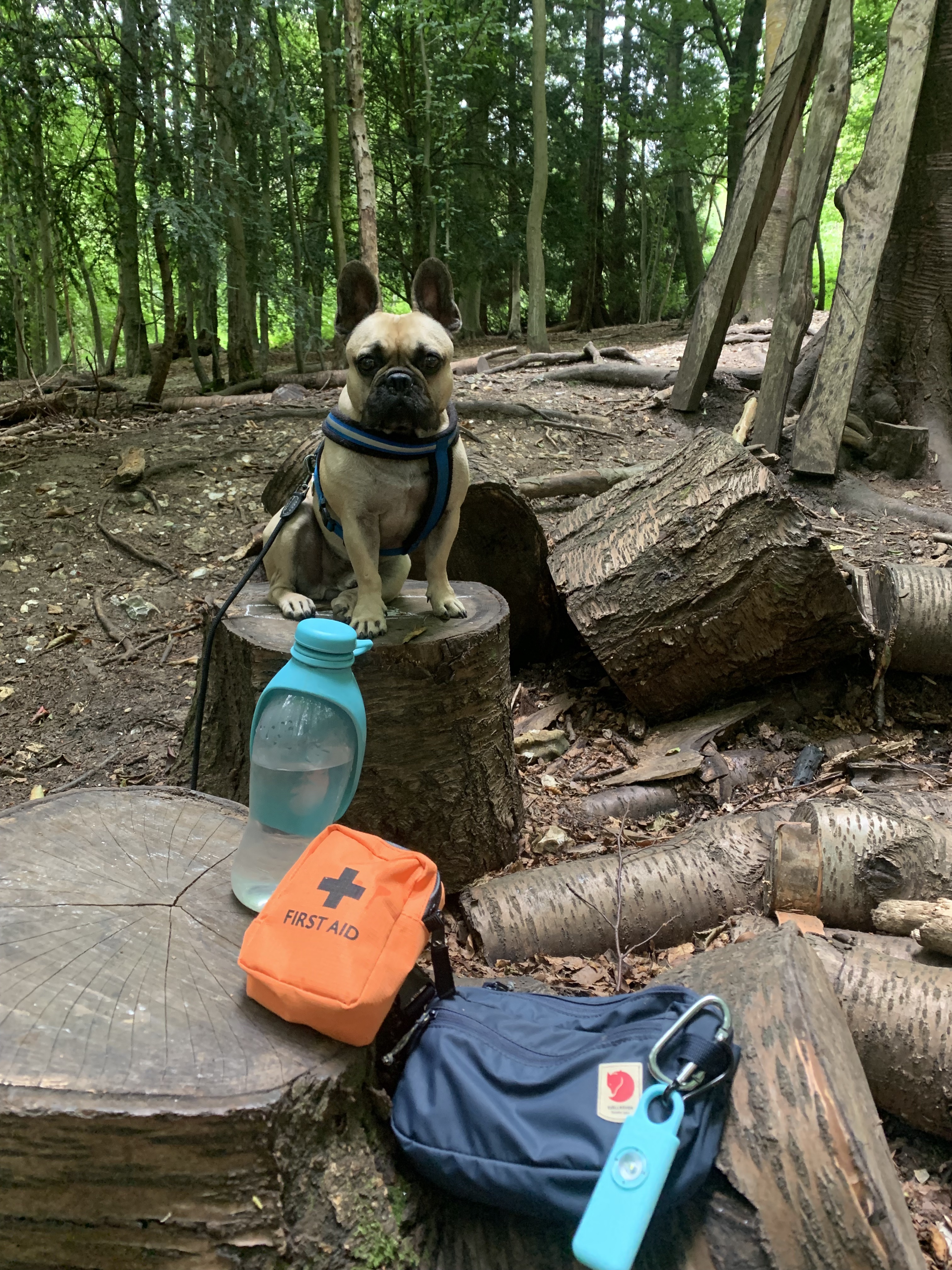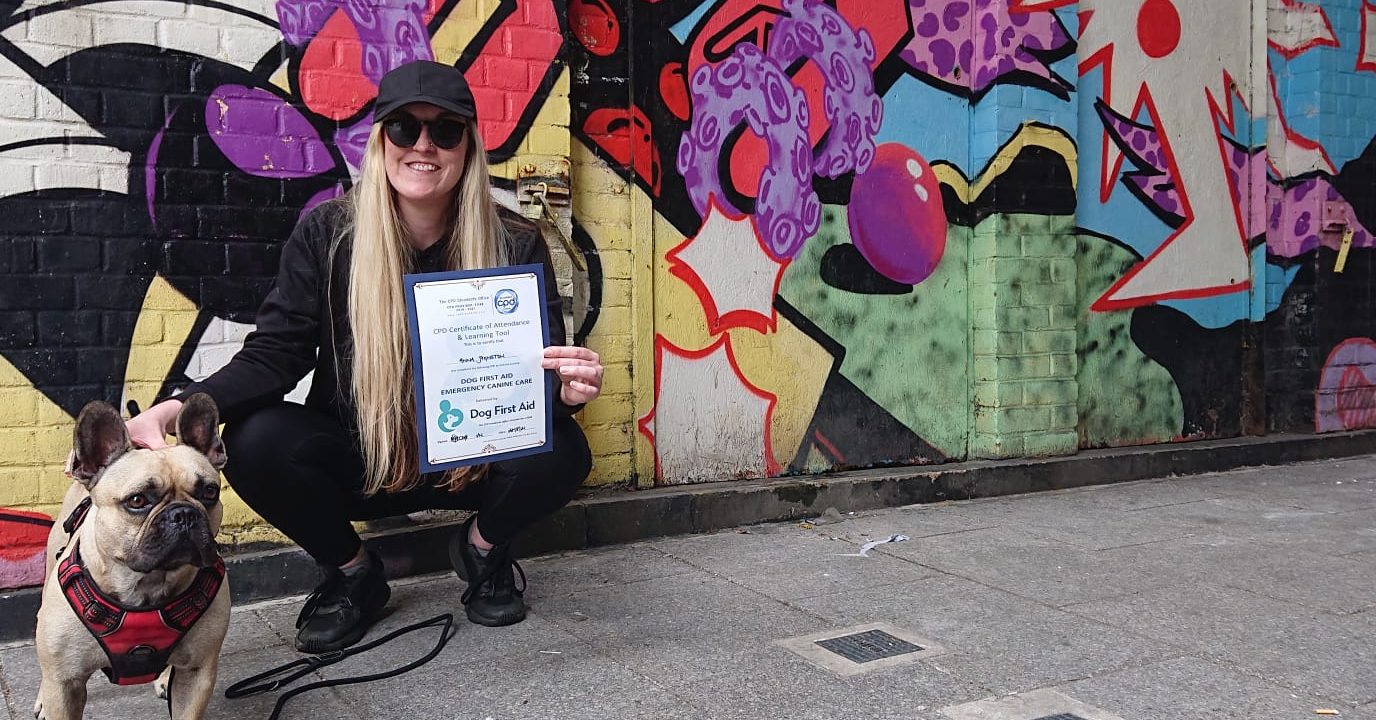I recently renewed my dog first-aid training, which runs out every three years as legislation and training move with the times. As I listened to the questions that came up, specific lessons and myths surprised the training group.
1. You don’t have to be dog first-aid trained to be a dog walker
This is no joke. Unfortunately, even though our dogs are part of our families, anyone can be a dog walker. They don’t need emergency canine first-aid training and could potentially hurt your dog by acting on instincts instead of training. If you’re looking for a dog walker near you, make sure that the person you hire has a certificate to show that they are dog first-aid trained and can take swift action in an emergency.
Here are some basic questions to ask professional dog walkers about dog first aid:
- Do you carry a dog first-aid kit with you on walks?
- Have you taken dog first-aid training in the last three years?
- Will you ask for my vet details during the onboarding process?
- Is emergency care covered in your terms and conditions?
If the answer is no to any of the questions above, the dog walker is not for you.

2. You’re not advised to comfort your dog during a seizure
As a pet owner, it’s a natural instinct during any traumatic event to protect your dog. Soothe them with kind words. Stroke and hold them. Give them water. The problem with instinct is that it’s not science. A seizure (or a convulsion) happens when there’s a sudden burst of electrical activity in the brain, disrupting normal messaging processes. Abnormal electrical activity within the brain cause seizures, where the dog’s muscles contract and relax rapidly. When you try to talk to or touch your dog during an attack, you create a sensory activity that keeps the seizure going for longer.
If your dog has a full or partial seizure, you shouldn’t do anything that provokes your dog’s senses. Instead, you should aim to make sure your dog is safe, make the episode last for as little time as possible, film it happening, and, of course, take your dog to the vet.
Here’s what to do if your dog has a seizure:
- Do a visual assessment. Protect your pet from danger and anything that could hurt them. Move other pets and small children out of the area, and furniture to a safe distance.
- Turn down the lights, ask people to shhhh, close the windows to keep noise to a minimum and avoid touching them (as external distractions can prolong a seizure).
- Don’t try to feed or water your dog, and don’t put anything in their mouth.
- Note down the time the seizure started and film exactly what happens. This is useful for the vet to diagnose the cause of the fit and whether the seizure was full or partial.
- After the seizure ends, then you can soothe your dog. They can remain disorientated for up to two hours and will be thirsty so encourage them to drink slowly.
- Call your vet.
Most seizures are over within two or three minutes. However, if there are multiple seizures in quick succession or the seizure lasts longer than five minutes, you should contact your vet immediately as they might need medication to stop the seizures. After the attack, your dog may be disoriented or sleepy for up to a couple of hours.
3. Apple cores, onions, conkers and buttercups are poisonous to your dog
Being the person responsible for hurting your dog would be hard to live with. So, listen up. Some foods and substances poisonous to a dog are common. However, there are hundreds more that you might not have heard of that can be lethal to your dog.
A poison is any substance (a solid food, liquid, or a gas) which can cause damage if swallowed, breathed in, absorbed through the skin or injected. Some poisons can result in seizures, blurred vision, anaphylaxis and can be fatal – so be cautious and always get your dog seen by a vet.
Many foods eaten regularly by humans, such as onions and apples, can be extremely dangerous to your dog. Some poison can have a delayed response in animals, so if you think your dog has been exposed to a poisonous substance, don’t wait for the symptoms such as frothing at the mouth or vomiting to appear. Consult your vet immediately for advice.
Get to know some of the most common poisons to prevent harm coming to your dog:
- The core of the apple and the apple seeds especially can be harmful to dogs. This is because apple seeds contain cyanide which is released when they’re broken or chewed.
- Onions are toxic to dogs and cats. However, you won’t see signs of poisoning until a few days after consumption and so you may not even know what is making your pet ill. Whether dried, raw or cooked, all onion causes gastrointestinal upset and may result in red blood cell damage.
- Be aware of harmful plants like buttercups. Check out toxic plants through the Royal Horticultural Society rhs.org.uk.
- Conkers, acorns and many common plants have the potential to make your dog extremely ill.
Did you find out something unexpected? Comment below.

